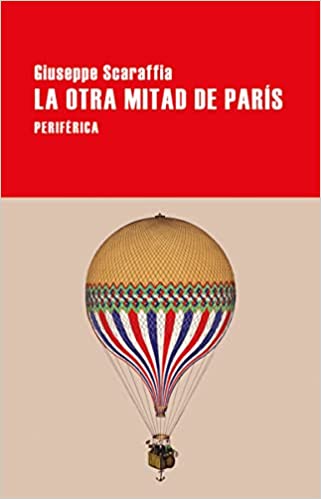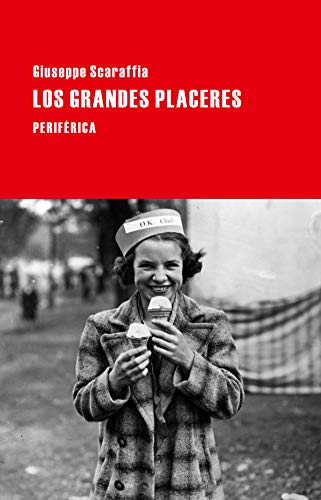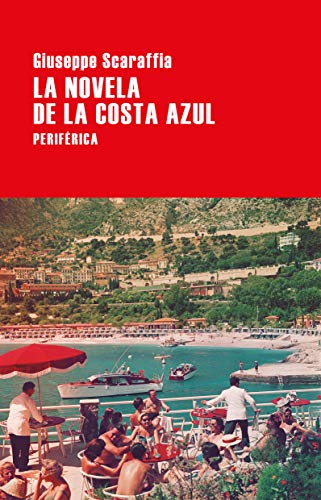Scaraffia's settings are filled with illustrious characters. And with them Scaraffia's mission is to make the test and the chronicle a kind of metaliterature where reality overtakes fiction on the right. Because talking about geniuses in art, literature, cinema or any other outstanding human field is to compensate the myth with the work, to end up structuring that other history where the referents of humanity as a civilization inhabit.
Except that in the case of Scaraffia there are always shared scenarios (understandable from his training in French literature). Spaces here and there of the most splendid France. On occasions, impossible encounters where time and space withdraw to arouse one another in marvelous syntheses that could perhaps explain much of the most unknown if they had really occurred. Wide open concepts about creativity, intelligence and in short the psyche.
Perhaps it is a thing of the French as an idea that is born between the melancholic and the passionate of the hint of his language. The point is that Scaraffia revels in that idea to suspend the moments lived in aromas and touch. Thus achieving that the world can be inhabited transformed into the character of the day.
Top 3 recommended books by Giuseppe Scaraffia
The other half of Paris
Paris is well worth a mass, as some king would say, assuming that disposing of Paris justified any other decision with a random or ad hoc readaptation component. Scaraffia knows this well, based on the unparalleled representation that he makes of a remote but always tangible Paris in his work.
Sometimes we confuse Paris with the bohemian image of the left bank of the Seine, the well-known rive gauche. But, in the interwar period, the main stage of the artistic, literary and mundane life of the City of Light was the other shore: the forgotten rive droite. After the disaster of the Great War, the winds of revolution were blowing in customs and arts. Those were the years of the emancipation of women, of frenetic dances and political action, of surrealist provocation and the birth of the modern novel.
The years of Henry Miller and Anaïs Nin, Raymond Roussel, Marcel Duchamp, Elsa Triolet, Simone de Beauvoir, André Malraux, Marcel Proust, Colette, Vita Sackville-West, Louis-Ferdinand Céline, Jean Genet, Coco Chanel, Jean Cocteau, Sonia Delaunay, Marina Tsvietáeva, Isadora Duncan, Stefan Zweig… And many others who turned the right bank into the center of the world. With the structure of a peculiar travel guide that reveals a world that has disappeared.
The other half of Paris seeps into the streets and houses, hotels and cafes, libraries and nightclubs inhabited by this bewildering gallery of eccentric Parisians (for they all were, either by birth or by rebirth). And he combines the qualities that have made Giuseppe Scaraffia a prized cult author: unusual erudition, radical vitalism, and the pulse, between humorous and tender, of the good storyteller. In short, this book is not a mere map of a city or a past time, but the vivid representation of a way of understanding art as an intensified form of life, and vice versa.
The Great Pleasures
While self-help authors wear themselves out in books and books about the best route to happiness, Scaraffia takes us to what great personalities posed as the simply probable best option towards that happiness. With the humble notion that no one knows for sure.
The French writer Jules Renard said that the only happiness consists in looking for it. Their absence is the greatest form of "empty", and each one takes care of furnishing that emptiness, of filling it, however they can. Some with objects, others with experiences and sensations; even with what we call love. From the mystic to the fan of games of chance, from the guerrilla fighter to the collector, they all pursue the same thing; as Somerset Maugham knew, "the things we miss are more important than the things we have."
Some, like Voltaire, admit that basically all you have to do is cultivate a garden: there we will find a pure form of happiness; others will find it in certain objects, however humble they may be, in which beauty seems to be incarnated. Everyone has their own recipe and often the most dissolute seem the wisest. There are many who believed, and believe, that great pleasures (even the "simple" pleasure of wanting) offer us the greatest possible form of happiness, the only form in fact.
There are many clues in this book and many quotes, both from great women and great men (writers, artists, filmmakers...). Some of its pleasures already belong to the past, although we will enjoy reading about them; but most, luckily, do not have an expiration date. Like kisses and bicycles, coffee and chocolate, trips and flowers.
The novel of the French Riviera
The narrative microcosm becomes in this novel a universe dotted with stars. We never get tired of discovering glimmers here and there among so many characters who left their passage through the world like a fascinating trail of a shooting star.
This is the fascinating story of a mythical place and of the more than one hundred legendary characters who lived in it for some time. From Anton Chekhov to Stefan Zweig, from Scott and Zelda Fitzgerald to Coco Chanel; going through Guy de Maupassant, Friedrich Nietzsche, Pablo Picasso, Alma Mahler, Aldous Huxley, Katherine Mansfield, Walter Benjamin, Anaïs Nin, Somerset Maugham or Vladimir Nabokov, among many others.
For centuries, the Côte d'Azur was no more than any coast, a place to embark or disembark. In fact, at the end of the XNUMXth century, there were only fifty-seven English residents in Nice. However, already at the beginning of the XNUMXth century, Jean Lorrain wrote the following: «All the crazy people of the world meet here... They come from Russia, from America, from southern Africa. What a bunch of princes and princesses, marquises and dukes, true or false... Hungry kings and penniless ex-queens...
The forbidden marriages, the ex-mistresses of the emperors, the entire available catalog of ex-favourites, of croupiers married to American millionaires... Everyone, everyone is here». However, for the majority of writers and artists, the Côte d'Azur was just the opposite: a place of solitude, of creation, of reflection; A place to rest from the big city. «The Coast», said Cocteau, «is the greenhouse where the roots emerge; Paris is the store where flowers are sold."
Still today, that mythical paradise postcard not only reminds us of the most sophisticated Martini or Campari advertisements, but also the elegant comfort of palazzo pants with espadrilles (these inspired, like the striped t-shirts and the white hat, in the clothing of sailors and fishermen in the area).
In that same imaginary, the "dissipated and brilliant" youth of Françoise Sagan and Brigitte Bardot sometimes prevails over the memory of Simone de Beauvoir and her lovers or over Marlene Dietrich who read the novels of her neighbor Thomas Mann right there. Georges Simenon, with his infallible insight, perfectly portrayed what the Côte d'Azur was in his time: «A long boulevard that begins in Cannes and ends in Menton; a forty-kilometre boulevard lined with villas, casinos and luxurious hotels».
The rest appeared in any advertising brochure: the sun, the famous blue sea, the mountains; orange trees, mimosas, palms and pines. Its tennis courts and golf courses; its crowded restaurants, bars and tea rooms.



